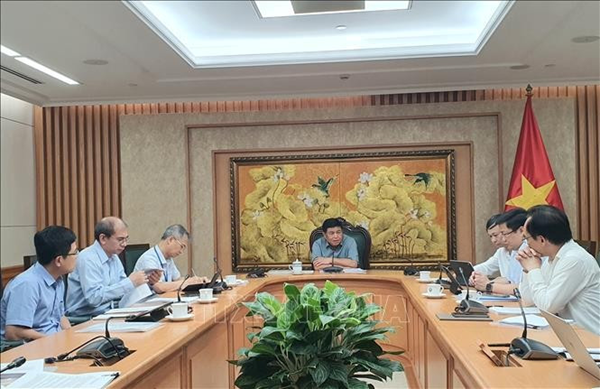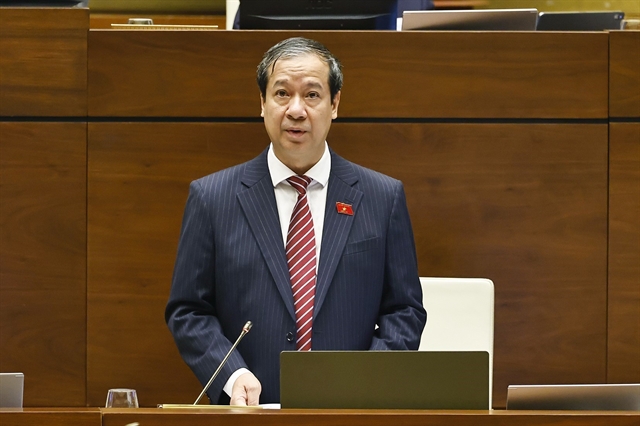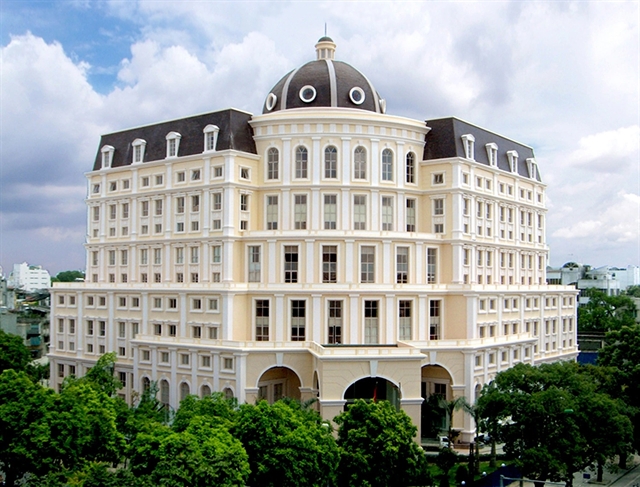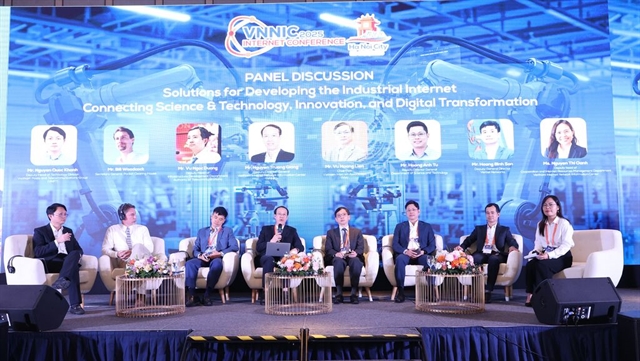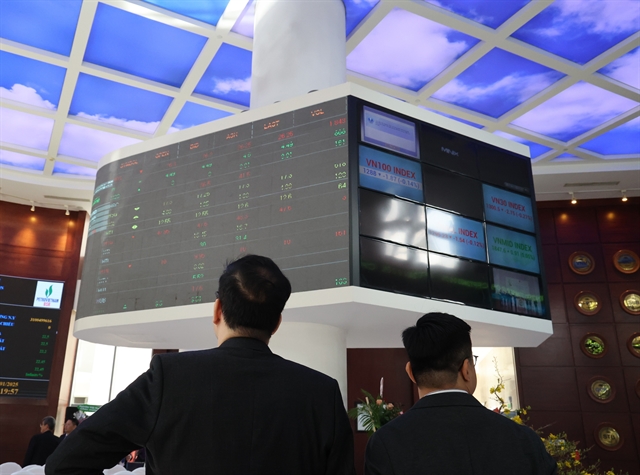 Economy
Economy

As one of the most-developing areas in Việt Nam, HCM City is faced with both opportunities and challenges to make the best use of the Fourth Industrial Revolution.
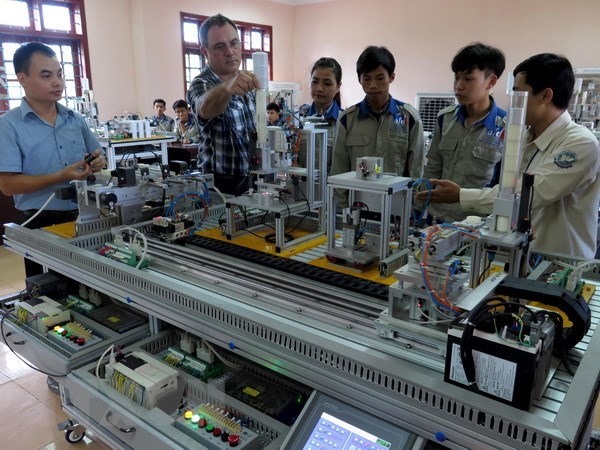 |
| Some local companies had reached outside the country for technicians or training for their employees. At the same time, a number of universities in the city had worked with local firms to train students. — VNA/VNS Photo |
HCM CITY – As one of the most-developing areas in Việt Nam, HCM City is faced with both opportunities and challenges to make the best use of the Fourth Industrial Revolution.
Facing a storm of technological advancement, many state agencies and businesses located in the southern hub have taken steps to use advanced technologies to improve their performances and product quality.
The Japanese-invested Juki Vietnam Co Ltd in 2016 decided to purchase two robot arms for nearly US$200,000 for processing work.
It was among the first companies in Việt Nam to use robotic technology to improve the quality of its products.
The robot arms have helped reduce the number of workers at the processing division from 12 to only one, and that person only has to monitor the robot’s function.
According to Juki Vietnam CEO Đào Quốc Cường, the company would buy modern equipment as it targets to raise productivity by 1 per cent every month to attract new orders.
Limo Group JSC, located in HCM City’s Hóc Môn District, has also invested in new technologies, machinery, facilities and human resources.
According to general director Huỳnh Tấn Lộc, Limo Group was now able to connect suppliers, factories and customers, saving a lot of time, cost and efforts for the three sides.
Artificial intelligence (AI) is also another update for companies in Việt Nam. It is seen as the backbone of the Fourth Industrial Revolution and has been well-received by many businesses.
They include VinEco, the agricultural arm of property and retail conglomerate VinGroup, the Vietnam Technological and Commercial Joint Stock Bank (Techcombank), military telecom group Viettel, and the southern-based electronic and digital retailer Nguyễn Kim.
According to Social Media Command Center, a company that has transferred AI apps to Vietnamese businesses, the demand for AI applications is on the rise among HCM City-based companies as it is considered the future along with big data and blockchain.
The same trend has also been seen among the city’s state agencies.
Bình Dân Hospital in late 2016 was the first agency in the health sector to use robots in surgery. Director Trần Vĩnh Hưng said robotic surgeons had improved the quality of the hospital, and the trend has been followed by Chợ Rẫy Hospital.
The Preventive Medicine Centre of HCM City has used a geographic information system (GIS) to monitor and care for patients infected by viral hemorrhagic fevers.
The use of GIS has helped the centre keep track on how the disease is spreading through the city and provide infected areas with plans to deal with the problems.
Tourism is another field that has been luring investment in new smart technologies.
The HCM City Department of Tourism has recently deployed an application to help visitors find information related to their trips such as restaurants, hotels and transportation, as well as emergency request information.
The department is also considering the implementation of a virtual tourism programme that provides suggestions for tourists and allows them to access photos, videos, clips and information about the city’s most popular venues.
Human resource issues
But a major problem for both state agencies and private businesses is finding employees to operate and monitor those technologies and make the best use of them.
USM Healthcare Medical Devices Factory JSC is a typical case that has found it hard to source high-quality human resources.
“We have not been able to find anyone who meets our requirements in this sector because our technologies are made in Germany and Switzerland, making them quite specific,” said Võ Xuân Bội Lâm, the company’s director.
To operate the machines, USM Healthcare had to send 10 engineers to Germany for special training, costing the firm a lot of time and money. It sometimes has to invite foreign specialists to train its employees on site.
A similar case is Minh Nguyen Industrial Support JSC. It had to look for 400 qualified workers as required by Samsung after the two sides reached an agreement in December 2016.
The company’s general director Châu Bá Long said looking for high-quality employees was one of the most difficult tasks for the firm when it co-operated with big companies.
“We had to hire foreign specialists, overseas Vietnamese and distinguished graduates of universities, colleges and vocational schools to meet Samsung’s request,” Long said.
According to the Saigon High-Tech Park Training Centre, companies are challenged by the fact that the quality of domestic labourers, including school graduates, did not meet their standards.
There are now more than 300,000 enterprises in HCM City and the number is forecast to reach 500,000 in 2020, raising the demand for high-quality labour rapidly.
A recent study by ManpowerGroup, the world’s leading personnel service provider, showed 45 per cent of companies in the world were having problems employing high-quality staff.
Việt Nam is no exception to the trend. The demand for high-quality labour has grown at least 20 per cent per year in the last three years, but the local labour supply cannot meet the demand.
A number of companies are looking for highly-skilled employees to work on urgent projects, but they have to spend too much time and money sourcing staff.
According to analysts, this had affected companies’ plans and limited their growth.
The human aspect remained important as people were the “software” that operated and monitor technologies that only served as hardware to the whole machine, Professor Hồ Tú Bảo, director of the John von Neumann Institute at HCM City National University, said.
“We need to develop a strong base of human resources to use technologies and turn them into valuable, helpful products or they will just stay the same forever,” he said.
But what was more necessary was improving education and training programmes to meet the demands of companies that were using modern technologies, he said.
“In the trend of AI application, Việt Nam is lacking qualified technicians, especially those who work in the IT sector,” said Trần Nguyên Vũ, IBM Vietnam’s director of software solutions.
Large-cap companies often chose to train their own employees to use AI applications while small firms had to purchase self-operating technologies to save on expenses, Vũ said.
School-business handshake
According to Nguyễn Xuân Thủy, MTEX Vietnam’s general management director, local companies should start working on the purchase and development of modern technologies while finding sources of high-quality labourers to run them.
Some local companies had reached outside the country for technicians or training for their employees. At the same time, a number of universities in the city had worked with local firms to train students.
Starting in Việt Nam in 1997, MTEX Vietnam Co Ltd found it difficult to design its integrated circuit (IC) semiconductor products when no local universities had their own faculties for circuit design and development.
The company decided to work with local schools to open new departments on circuit design and development. Thủy said that the company employed graduates from those departments after they finished school and then continued to train them at work.
MTEX Vietnam had trained more than 850 technicians since then and become the key IC development centre for the group, he said.
Local companies needed to co-operate with schools to introduce high-skilled labourers and new technologies because there was a big gap between the requirements of businesses and the actual competency of graduates, Kiều Huỳnh Sơn, vice chairman of the HCM City Association of Mechanical-Electrical Enterprise, said.
“Our association members hope local schools and institutes see each business as a research subject, a customer and a partner that travel alongside them on the path of innovation,” Sơn said.
Nguyễn Kỳ Phùng, deputy director of the HCM City Department of Science and Technology, said that some challenges remained before schools and enterprises could work with each other.
There were no specific policies or incentives for both sides to work together regarding finance and tax, he said, adding that schools did not regard co-operation with businesses as a strategic goal.
According to economists, the State must become a link between schools and businesses by sharing risks and providing incentives.
Local schools must be more active and work with businesses to improve the quality of students – which was considered the most important aspect of improving business competitiveness in Industry 4.0.
Đỗ Văn Dũng, the principal of HCM City University of Technology and Education, said Vietnamese schools must renovate their teaching and educational methods.
Teachers should become mentors so that the education sector can watch changes in the demands of the labour market and resolve businesses’ problems with human resources. – VNS

